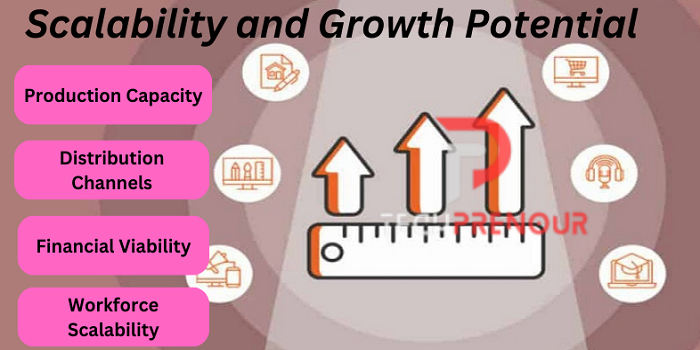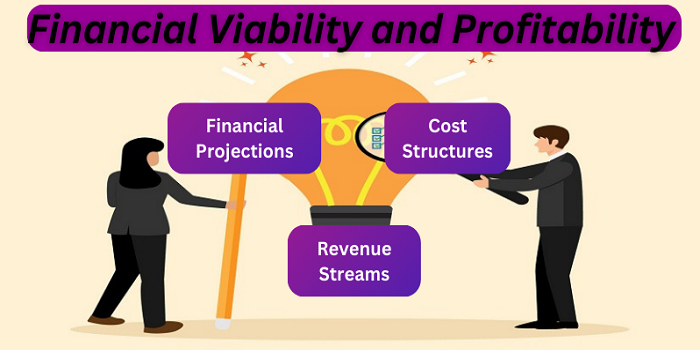Starting a business is an exciting journey, but not all ideas lead to success. How can you determine if your business idea has what it takes to thrive? Here are five signs that indicate your business idea might be a winner.
Table of contents
Market Demand and Trends
Understanding market demand is crucial for any business idea. Conduct thorough research to identify if there’s a genuine need for your product or service. Analyze industry trends, customer preferences, and competitor offerings to gauge demand.

- Thorough Research: Begin by conducting comprehensive market research to understand the current landscape. Look into industry reports, market studies, and customer surveys to gather relevant data.
- Identify Need: Determine if there’s a genuine need for your product or service in the market. This involves assessing whether your offering solves a problem or fulfills a desire that customers have expressed.
- Industry Trends: Stay updated with industry trends and developments. This includes monitoring changes in consumer behavior, emerging technologies, regulatory shifts, and market dynamics that can impact demand.
- Customer Preferences: Understand your target audience’s preferences, buying habits, and pain points. This insight helps tailor your offering to meet specific customer needs and preferences effectively.
Scalability and Growth Potential
Consider the scalability of your business idea. Can it grow efficiently without major operational hurdles? Evaluate factors like production capacity, distribution channels, and workforce scalability to determine its growth potential.
Assess the financial feasibility of your business idea. Consider factors such as initial investment requirements, operating costs, revenue generation potential, and profitability projections. Conduct thorough market research and financial analysis to determine if your idea is financially viable in the short and long term.

| Factor | Description |
| Production Capacity | Evaluate your ability to scale production efficiently to meet increasing demand without compromising quality. Consider technology upgrades, process optimization, and supply chain management. |
| Distribution Channels | Analyze the effectiveness of your distribution channels in reaching target markets and expanding into new geographic areas. Assess scalability through partnerships, e-commerce platforms, and logistics optimization. |
| Workforce Scalability | Determine if your workforce can scale alongside business growth. Assess hiring processes, training programs, and organizational structure for scalability and efficiency. |
| Financial Viability | Conduct a comprehensive financial analysis to ensure your business idea is financially sustainable and capable of generating profits. Consider initial investment, operating costs, revenue streams, and profitability projections. |
Unique Value Proposition
What sets your business apart from competitors? Define your Unique Value Proposition (UVP) to differentiate your offering. Focus on solving a specific problem or delivering exceptional value to customers.
Your Unique Value Proposition (UVP) is the heart of what sets your business apart from competitors. It’s not just about stating what you do but also about articulating why you do it better than anyone else.

By focusing on solving a specific problem or delivering exceptional value to customers, your UVP becomes a powerful tool in attracting and retaining clients. It’s not just a statement; it’s a promise that you consistently fulfill, building trust and loyalty among your target audience.
Financial Viability and Profitability

Financial Projections
- Create comprehensive financial statements, including income statements, balance sheets, and cash flow statements, for at least the first three years.
- Project revenues based on market research, pricing analysis, and sales forecasts. Consider different scenarios (optimistic, realistic, pessimistic) for accuracy.
- Factor in all costs, including fixed costs (rent, utilities, salaries) and variable costs (materials, production, marketing).
Revenue Streams
- Identify primary revenue streams from your product/service offerings. Consider additional streams like subscription models, licensing, or add-on services.
- Analyze pricing strategies based on competitors, value proposition, and target market affordability. Determine optimal price points for maximum revenue.
Cost Structures
- Break down costs into direct costs (related to production) and indirect costs (overheads). Optimize procurement and operational processes to reduce direct costs.
- Monitor and control indirect costs such as marketing, administration, and maintenance. Implement cost-saving measures without compromising quality.
Customer Validation and Feedback
Customer validation and feedback are crucial steps in the journey of refining a business idea. By engaging with real customers through prototypes, beta testing phases, or early adopter programs, businesses can gain valuable insights into customer needs, preferences, and pain points.
Surveys, interviews, and A/B testing further enhance this understanding, allowing businesses to fine-tune their offerings based on validated learning.
Social media platforms and online communities serve as powerful tools for ongoing customer engagement, enabling businesses to gather real-time feedback, address customer suggestions, and build strong relationships.

Conclusion
Evaluating the potential of your business idea requires a strategic approach. By considering market demand, scalability, uniqueness, financial viability, and customer validation, you can determine if your business idea is a winner. Remember to iterate and adapt based on feedback and market insights to increase your chances of success.
Read More Is Your Business Idea a Winner? 5 Signs to Know
FAQS
Conduct market research to understand customer needs, preferences, and industry trends. Use surveys, interviews, and competitor analysis to gauge demand and identify potential market gaps.
Evaluate factors like production capacity, distribution channels, scalability of operations, and workforce expansion capabilities. Assess if your business can grow efficiently without significant obstacles.
A unique value proposition (UVP) differentiates your business from competitors by highlighting what makes your offering special. It helps attract customers by addressing their specific needs or solving problems better than alternatives.
Validate your idea through prototypes, beta testing, or pilot programs with real customers. Gather feedback on usability, features, pricing, and overall satisfaction to refine your offering based on validated learning from your target audience.

